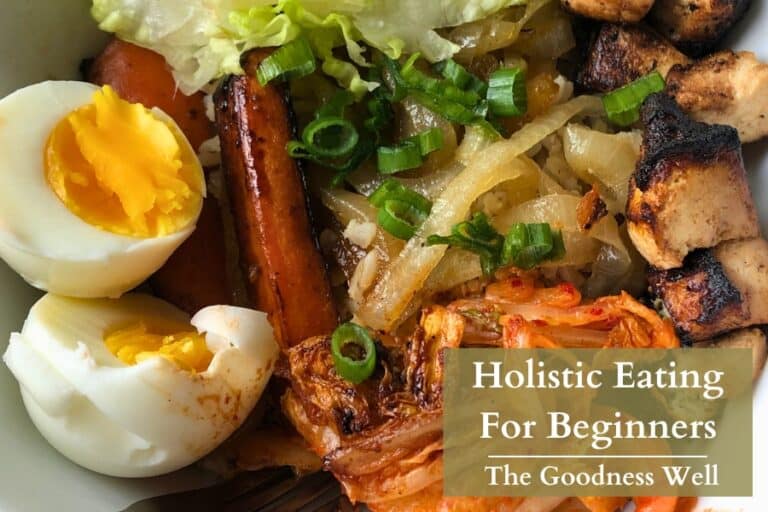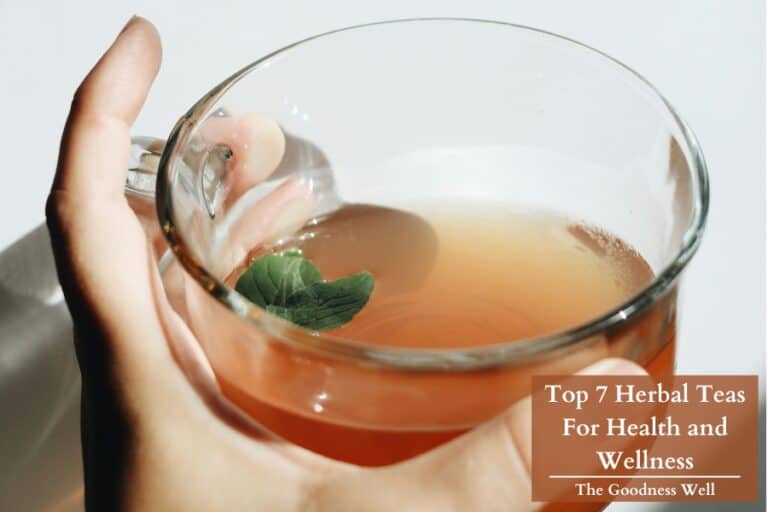11 Fermented Foods You Need To Add To Your Diet
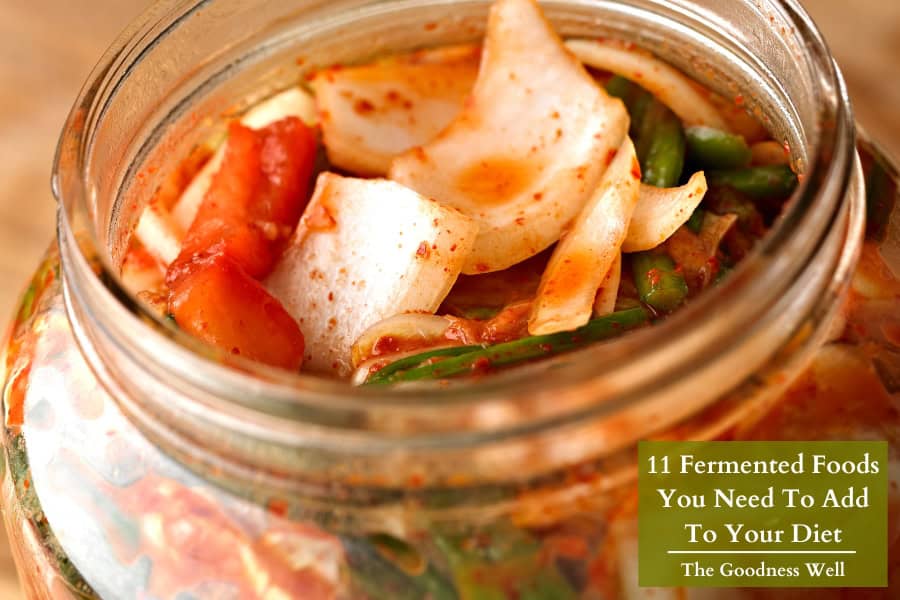
Fermented foods have been around for over 7,000 years found in Asian, Eastern European, Middle Eastern, and Mediterranean dishes.
But recently, fermented foods have gained popularity, not only for their unique flavors but also for the health benefits they provide.
In this article you’ll learn, what exactly are fermented foods, why should you eat them, and how can you easily add them to your diet.
Let’s dig in.
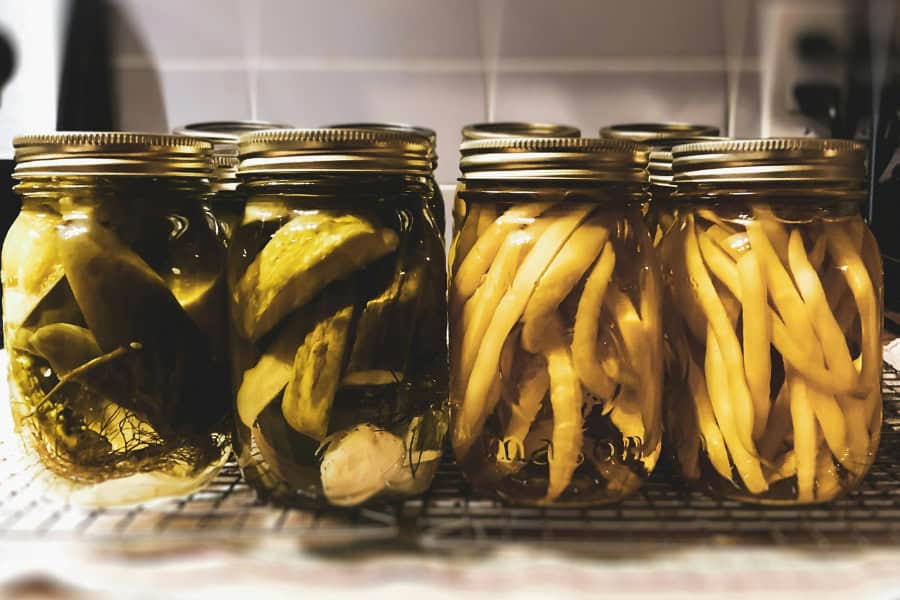
What Are Fermented Foods?
Fermented foods are foods that have gone through the process of fermentation, where natural bacteria, yeast, or fungi break down sugars and starches into acids, gases, or alcohol.
These compounds can help your body absorb nutrient absorption, strengthen the immune system, and reduce digestive issues like bloating and constipation.
Top 11 Fermented Foods
Adding fermented foods to your diet can be so beneficial to your health and it doesn’t have to be complicated. You can ferment foods at home or find all of these options at the grocery store.
Here are the best fermented foods to add to your diet and some practical ways to do it.
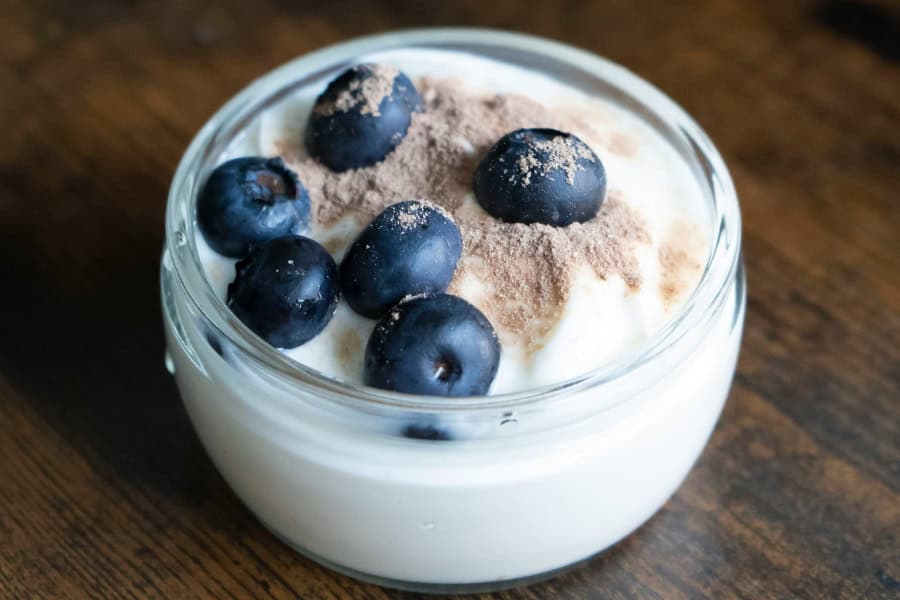
1. Start Your Day with Kefir or Yogurt
Swap out your morning smoothie base with kefir or a yogurt that contains live and active cultures. Not only will this add beneficial probiotics, but it will also offer a creamy, tangy flavor that pairs well with fruits, nuts, or seeds.
Choose plain, unsweetened yogurt or kefir to avoid added sugars, which can counteract the benefits of probiotics.
Here are some great yogurt and kefir options:
- Plain Greek Yogurt (Unsweetened)
- Top Brands:
- Fage Total Greek Yogurt
- Chobani Plain Greek Yogurt
- Siggi’s Icelandic Skyr (thicker and low in sugar)
- Top Brands:
- Non-Dairy Yogurt (With Live Cultures)
- Top Brands:
- Forager Project Organic Dairy-Free Yogurt
- Kite Hill Almond Milk Yogurt
- Cocoyo Living Coconut Yogurt
- Top Brands:
Best Kefir Options:
- Plain Kefir (Unsweetened)
- Top Brands:
- Lifeway Organic Plain Kefir
- Maple Hill Creamery Organic Whole Milk Kefir
- Wallaby Organic Plain Kefir
- Top Brands:
- Goat Milk Kefir
- Top Brands:
- Redwood Hill Farm Goat Milk Kefir
- Top Brands:
- Non-Dairy Kefir
- Top Brands:
- GT’s CocoYo Kefir
- Califia Farms Probiotic Dairy-Free Kefir
- Top Brands:
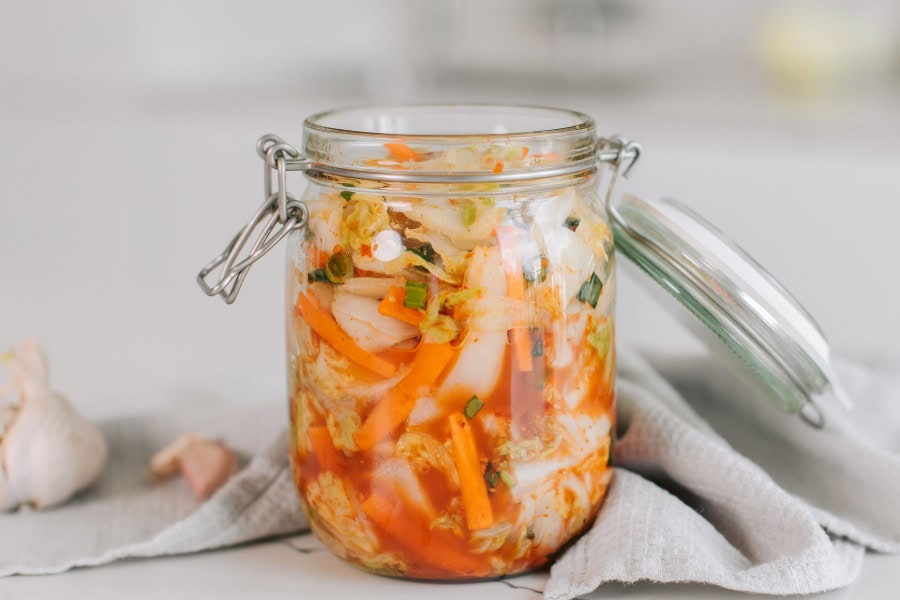
2. Add Sauerkraut or Kimchi to Your Meals
Sauerkraut and kimchi are perfect complements to many dishes. You can add a scoop to your salads, sandwiches, or grain bowls for an extra crunch, spice, and tang.
I like to add spicy kimchi to this wannabe homemade chipotle salad I like to make.
Kimchi and sauerkraut are not only super flavorful but also full of probiotics and fiber to support digestion.
Look for raw, unpasteurized versions of sauerkraut and kimchi, as pasteurization kills off beneficial bacteria.
3. Drink Kombucha as a Refreshing Beverage
Unlike the other foods well talk about this one is a drink! Instead of reaching for a soda or sugary drink, try a glass of kombucha.
This fermented tea comes in lots of different flavors and can help satisfy cravings you may be having. Kombucha gives you a fizzy drink feeling while supplying your body with beneficial probiotics.
But just a heads up moderation is key. Kombucha can contain some sugar and trace amounts of alcohol due to fermentation.
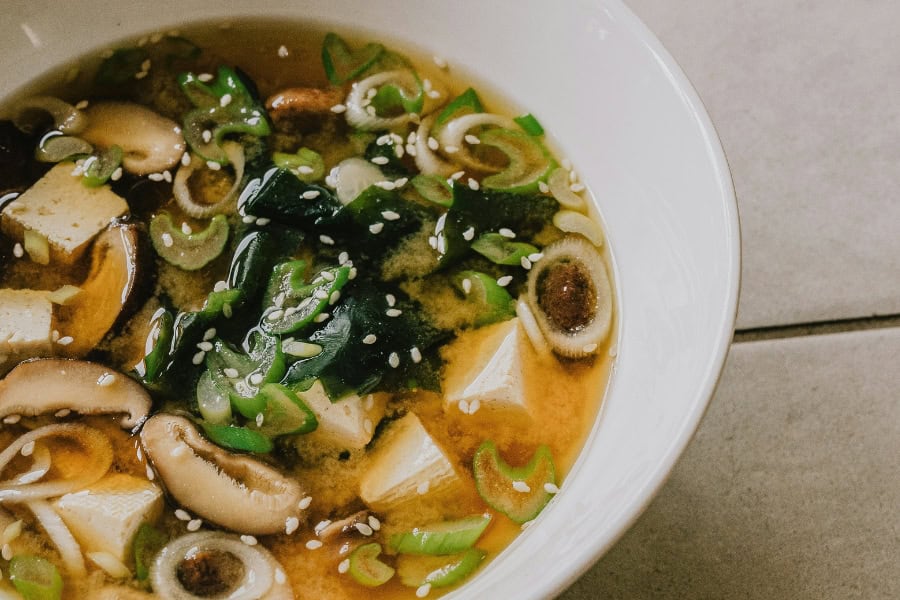
4. Use Miso in Soups and Dressings
Miso is a fermented soybean paste that is nothing short of delicious. It adds depth of flavor to soups, salad dressings, and marinades. Justin loves miso soup when he’s feeling sick or needing a warm meal on a cold day.
It’s rich in probiotics, essential vitamins, and minerals like vitamin K, manganese, and copper. A spoonful of miso dissolved in warm water creates an easy and super nutritious soup.
Just be careful not to avoid boiling miso, as high heat can kill the beneficial bacteria. Add it to warm but not boiling liquids.
5. Experiment with Tempeh
Tempeh is a fermented soybean product that’s high in protein, making it a great meat alternative.
You can cook tempeh in stir-fries, grill it, or use it in salads and sandwiches. It has a firm texture and a nutty flavor, perfect for those looking to increase their plant-based protein intake.
This is another fermented food that you want to make sure you don’t cook at a high temperature.
To maintain its nutritional benefits, tempeh should be cooked at medium heat, no higher than 300°F (150°C) if baking, or medium heat on the stovetop, and never microwaved.
6. Add Pickles to Your Snack Routine
Now this should be an easy one unless you’re 1 of the 10 non-pickle lovers on the planet.
Fermented pickles (without vinegar) are a tangy and crunchy snack that’s great for gut health. Look for naturally fermented pickles in the refrigerated section of your grocery store to ensure they contain live cultures.
I like to pair pickles with cheese or nuts for a quick and satisfying snack.
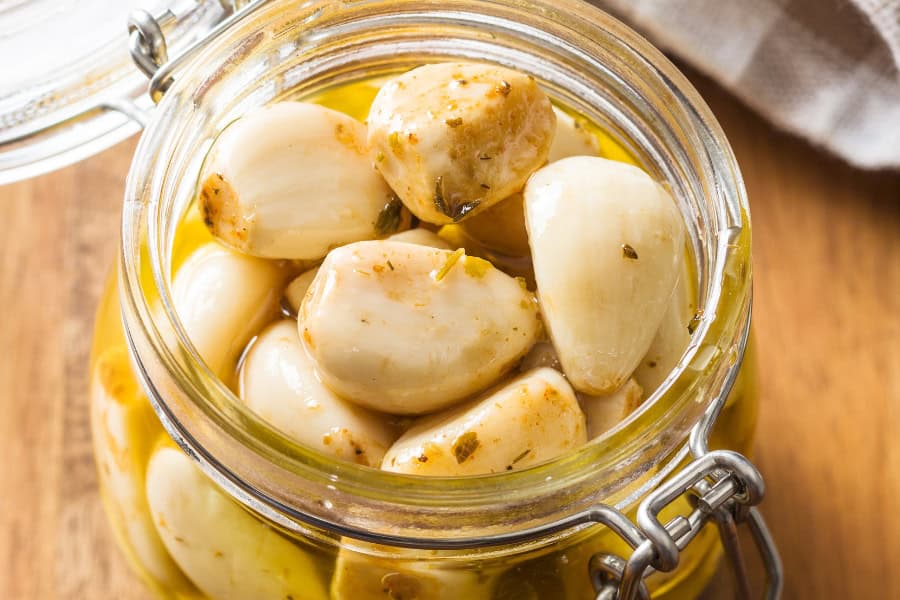
7. Incorporate Fermented Garlic in Your Cooking
Great for cooking, fermented garlic can easily be added to dishes for both flavor and health benefits.
Use it in sauces, dressings, or as a seasoning for meats and vegetables. It retains its antimicrobial and immune-boosting properties through fermentation and it adds a yummy taste to your dishes.
8. Include Natto in Your Diet
Natto is a traditional Japanese fermented soybean product known for its high vitamin K2 content, which supports bone and heart health.
Though it has a strong flavor and sticky texture, natto can be eaten with rice or added to salads and soups.
I will say if you’re new to natto, start small because it does have a unique flavor and can be an acquired taste.
9. Make Fermented Salsa
Adding fermented salsa to your meal can be a great way to give your food a probiotic punch.
Made from fermented tomatoes, peppers, onions, and spices, it’s perfect for tacos, salads, or as a dip with tortilla chips.
You can ferment salsa at home in mason jars—just let it sit at room temperature for a couple of days.

10. Try Sourdough Bread
As a bread lover, making sourdough bread is almost as satisfying as eating it!!
Sure sourdough bread is still bread but it’s even better than your average dough.
Sourdough bread is made through a fermentation process that breaks down gluten and enhances nutrient absorption.
It has a tangy flavor and is easier to digest than regular bread, thanks to the beneficial bacteria and wild yeast used in its production.
11. Snack on Fermented Cheese
Certain cheeses, like Gouda and cheddar, are fermented and contain beneficial probiotics. These cheeses are a great source of calcium and also provide gut-friendly bacteria that can support digestion.
Choose raw, unpasteurized cheeses for the highest probiotic content. You can pair these with fermented pickles and get double the benefits!
Why Should You Eat Fermented Foods?
Other than the fact that they’re yummy, eating fermented foods supports gut health by providing beneficial probiotics, improving digestion, and boosting immunity.
- Improve Gut Health: Fermented foods are rich in probiotics, the “good bacteria” that populate your gut. A healthy gut microbiome is linked to better digestion, improved immunity, and even mental health benefits.
- Boost Nutrient Absorption: The fermentation process makes it easier for your body to absorb minerals like calcium, magnesium, and zinc, which are important for bone health and immunity.
- Strengthen Your Immune System: With much of the immune system being in the gut, fermented foods help create a balanced and healthy gut that supports the immune system.
- Promote Digestive Health: Regular consumption of fermented foods can help balance the gut, making digestion smoother and reducing issues like bloating, gas, and constipation.
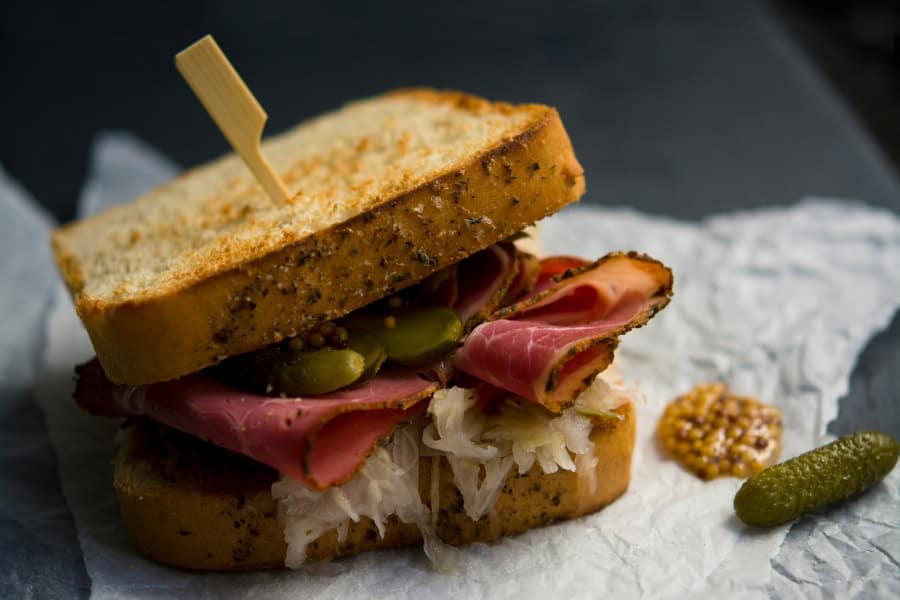
Incorporating fermented foods into your daily diet is one of the best things you can do to improve your gut health and digestion.
But don’t worry you don’t need to add all 11 of these foods into your diet right away. Start small by adding just one or two fermented foods to your routine and gradually build up as your taste buds and digestive system adjust.
Whether you choose to sip kombucha, enjoy yogurt for breakfast, or top your salad with sauerkraut, (which my husband loves to do)your body will thank you for the added probiotics, nutrients, and improved digestion.
Let me know in the comments which ones you love and how you like to add them into your meals! As always thank you for reading!!

